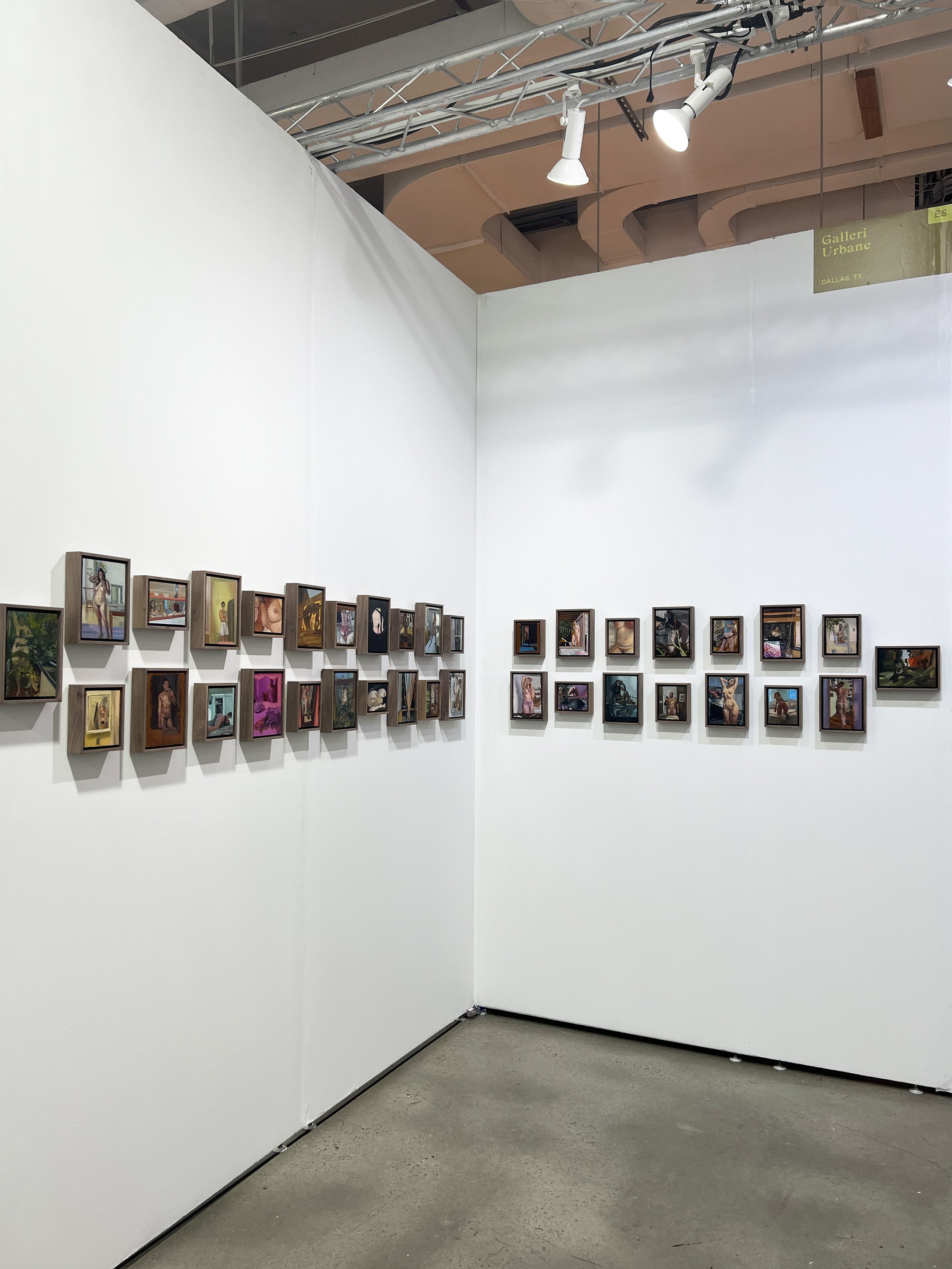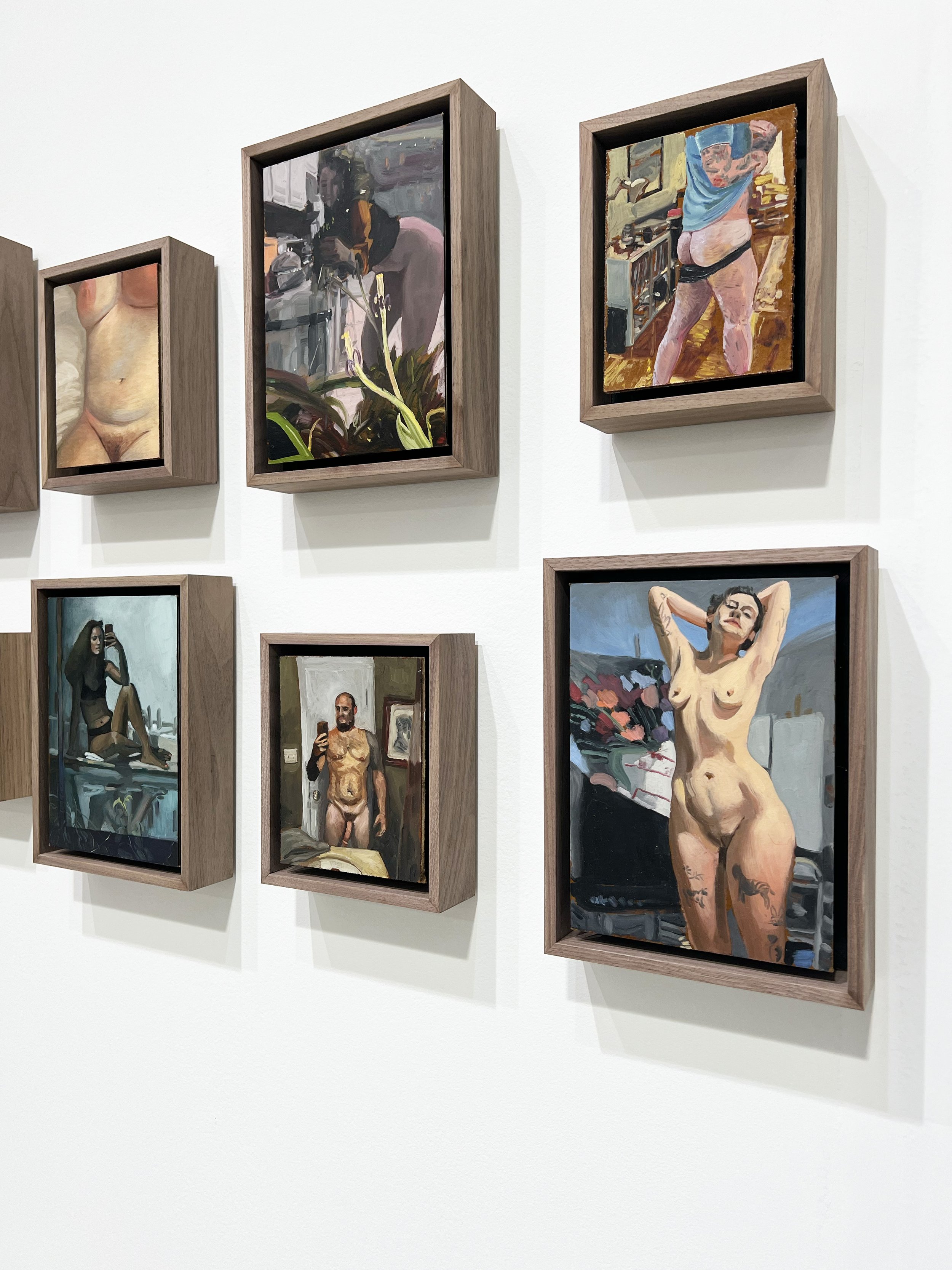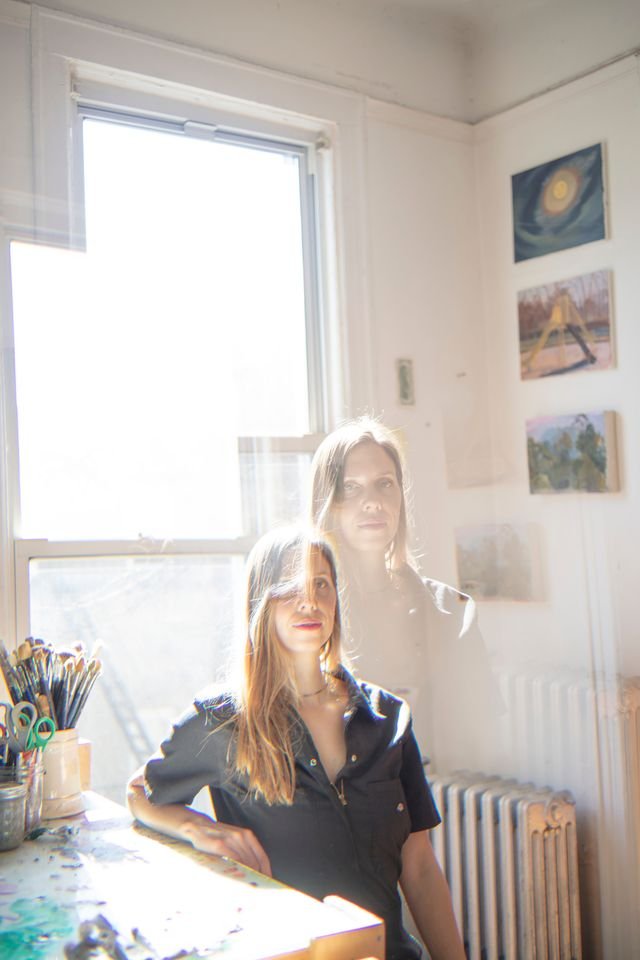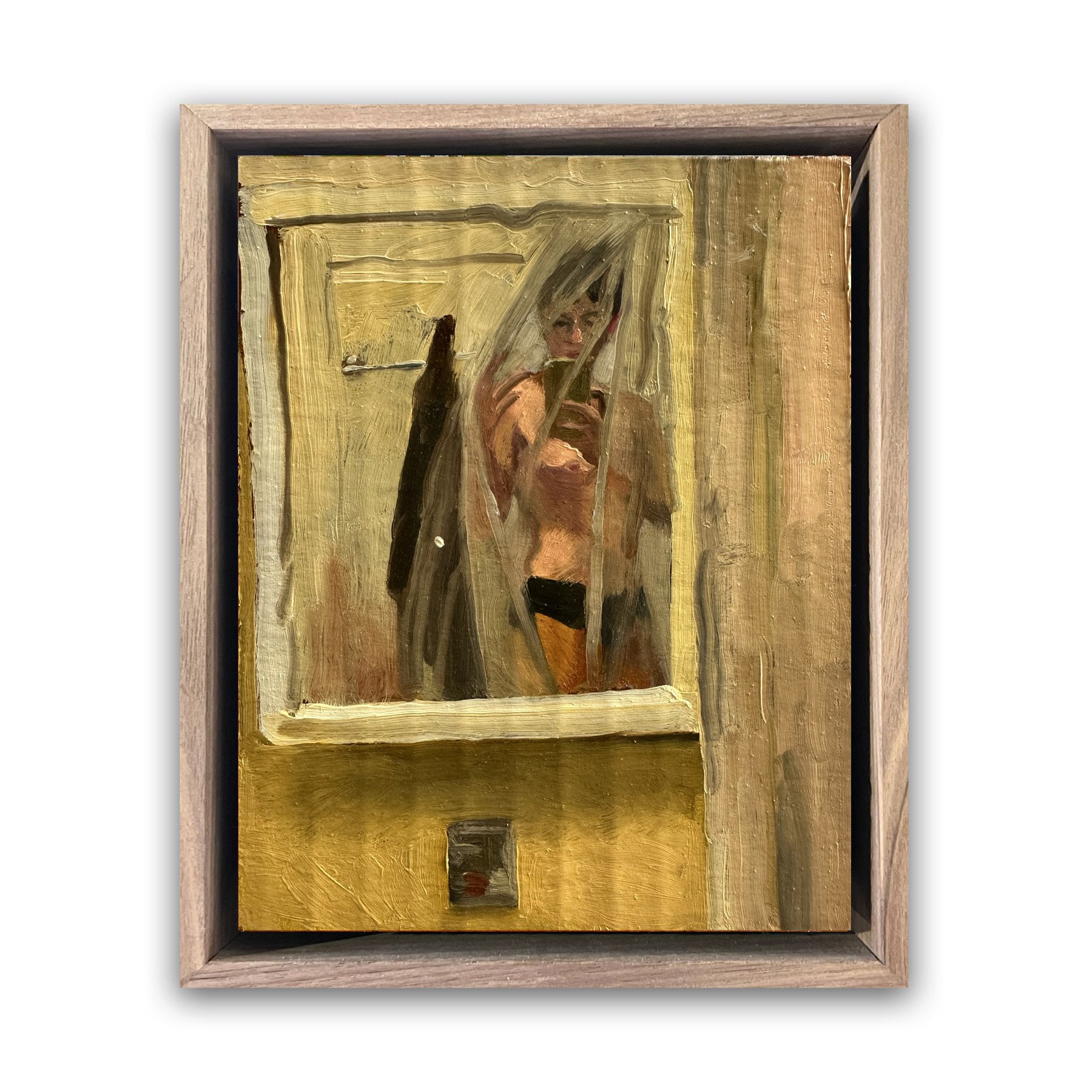Future Fair N.Y.
May 1-4, 2024
Booth E5
Solo Project Booth ‘Send N*des’, Brooklyn artist Drea Cofield
Galleri Urbane is proud to present Send N*des, a solo booth presentation at Future Fair, of work by Drea Cofield, drawing from her ongoing “selfie“ project and opening topics of both self-expression and censorship, the canonical art-historical narrative and the contemporary realities of technology and AI.
“The landscape has always been a landing point for me, as a subject, as a metaphor for the body, a metaphor for a psychological space, and also a place on which to project desire,” she says. The idea of the body as landscape characterizes the almost handheld-size, intimately scaled paintings on shellacked cardboard which she began making over a decade ago in graduate school. Each work is based on a photograph sent to her—originally an erotic nude snapped to give to a lover or keep for oneself. Ideas of intimacy and exhibitionism are negotiated through the constellations of objects in interior spaces, almost always with a mirror, always with natural light that bathes both body and objects. "The play of light through the space and the intimacy in the play of things in the space in conversation with the body" becomes the province of Cofield's paintings, which act as prisms through which to refract notions of intangibility and representation, even as the individual intersects with the collective.
Future Fair NYC — installed view Booth E5
“How do you elicit desire? What is desire?” Cofield’s work asks. And what right have we to witness? The pictures, sans narrative, act as framing devices for what are essentially investigations of selfhood; lingering with the brush on what is usually sublimated, they explore liminal spaces, the uncanny, and the presence of a libidinal gaze. They seize scenes in a state between invitation and reply. The painter’s point of view is a surrogate: the viewer is no longer merely a viewer, but an audience—and potential creator of meaning. “It’s absolutely a kind of mirror box in that way,” Cofield says. And in this way, it is reminiscent of other “boxes,” other intimately scaled works: the quiet, domestic interiors of Johannes Vermeer or the stunning early 19th-century erotic miniature “Beauty Revealed,” by American painter Sarah Goodridge. “It’s very charged,” the artist says of the gap between rendering and reality. The same can be said of the witnessing: confronted with a private moment and visceral image, the viewer is both insider and outsider, both lover and voyeur.
“After the Instagram shutdown, I spent days panicking, trying to find a way to recover my account and the thousands of deleted contacts which I now understand I will most likely never get back. I’m left wondering how social media and AI censorship are influencing art. AI-driven censorship that flags, deletes, or shadowbans “sensitive content” hurts artists. With no humans judging our content, nuance has been deleted, and the difference between sexual solicitation and an artistic statement is non-existent. Does context matter, or is every word or photograph we post on social media now simply judged by its optical proximity to pornography? How does pornography relate to photography, how does photography relate to painting? How does nudity relate to sex? How does nude relate to the word I suppose I should have used, “nood”? What strange new language is being created to circumvent the watchful eyes of our puritanical AI censors, and is it a language I even want to learn to speak?”
— Drea Cofield
The exhibition’s content became even more charged just weeks before its opening. In a statement, Cofield writes, “My Instagram account was shut down immediately after I began promoting my solo exhibition (then titled Send Nudes), which recently opened in October at Galleri Urbane in Dallas, TX. This solo exhibition showcased paintings of selfies sent to me by enthusiastically consenting adults who understand how their images will be used. I was locked out of my Instagram account because the show’s title caused it to be flagged for “sexual solicitation.” There is no process in place to dispute this decision. My account was deleted the next day.
Again, I make paintings from selfies people send me. They are not anonymous—the subjects who send me selfies understand the scope of my project. They choose how to represent themselves and they can decide whether or not they want to be named in the title of the painting made from their photo. The most compelling selfies are usually nudes or semi-nudes people have taken for themselves or lovers. I have chosen to curate this very first exhibition of this selfie series and title it S*nd Nudes, a phrase that originated as a request usually made by men to women on the Internet. Here, it solidly positions the paintings in relation to the nude as a subject in art history, while underscoring the methods I use to request images and what it means to be able to do so as an artist and as a woman.
After the Instagram shutdown, I spent days panicking, trying to find a way to recover my account and the thousands of deleted contacts which I now understand I will most likely never get back. I’m left wondering how social media and AI censorship are influencing art. AI-driven censorship that flags, deletes, or shadowbans "sensitive content" hurts artists. With no humans judging our content, nuance has been deleted, and the difference between sexual solicitation and an artistic statement is non-existent. Does context matter, or is every word or photograph we post on social media now simply judged by its optical proximity to pornography? How does pornography relate to photography, how does photography relate to painting? How does nudity relate to sex? How does nude relate to the word I suppose I should have used, “nood”? What strange new language is being created to circumvent the watchful eyes of our puritanical AI censors, and is it a language I even want to learn to speak?”
Watch:
Interview with Drea Cofield about Send N*des project













